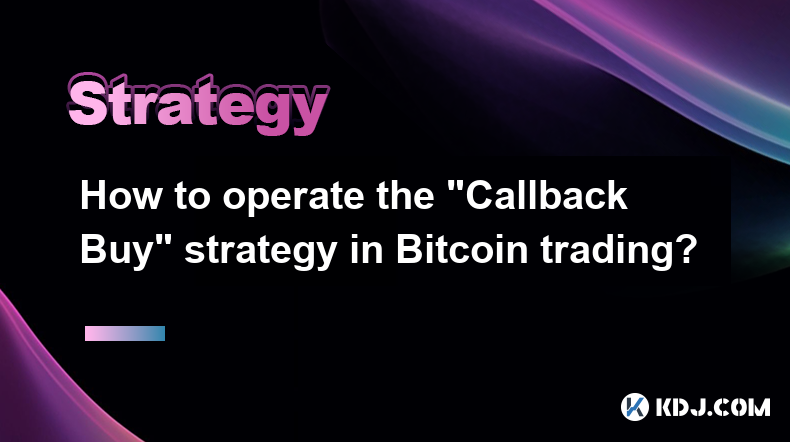-
 Bitcoin
Bitcoin $87,397.9802
3.50% -
 Ethereum
Ethereum $1,638.5055
3.01% -
 Tether USDt
Tether USDt $0.9999
0.01% -
 XRP
XRP $2.1242
3.09% -
 BNB
BNB $603.7834
1.95% -
 Solana
Solana $140.0048
0.50% -
 USDC
USDC $0.9999
0.01% -
 Dogecoin
Dogecoin $0.1620
4.34% -
 TRON
TRON $0.2434
-0.26% -
 Cardano
Cardano $0.6469
4.22% -
 Chainlink
Chainlink $13.4994
3.14% -
 UNUS SED LEO
UNUS SED LEO $9.4518
1.34% -
 Avalanche
Avalanche $20.6032
5.04% -
 Stellar
Stellar $0.2589
6.47% -
 Toncoin
Toncoin $3.0081
0.99% -
 Shiba Inu
Shiba Inu $0.0...01262
2.96% -
 Sui
Sui $2.2652
6.88% -
 Hedera
Hedera $0.1724
5.93% -
 Bitcoin Cash
Bitcoin Cash $342.0192
2.26% -
 Polkadot
Polkadot $3.9179
1.24% -
 Litecoin
Litecoin $80.9358
5.95% -
 Hyperliquid
Hyperliquid $18.0793
1.37% -
 Dai
Dai $1.0000
0.00% -
 Bitget Token
Bitget Token $4.4589
0.40% -
 Ethena USDe
Ethena USDe $0.9992
0.00% -
 Pi
Pi $0.6334
0.22% -
 Monero
Monero $215.7907
1.17% -
 Uniswap
Uniswap $5.4332
3.74% -
 Pepe
Pepe $0.0...07834
6.40% -
 Aptos
Aptos $5.1825
5.82%
How to operate the "Callback Buy" strategy in Bitcoin trading?
The "Callback Buy" strategy in Bitcoin trading involves buying after a brief pullback, known as a "callback," within an uptrend, identified by specific criteria and executed with prudent risk management and potential advanced techniques.
Feb 28, 2025 at 03:18 am

Key Points:
- Understanding the "Callback Buy" Strategy
- How to Identify Callback Buy Opportunities
- Executing a Callback Buy Trade
- Managing Risk in Callback Buy Trading
- Advanced Techniques for Callback Buy Trading
How to Operate the "Callback Buy" Strategy in Bitcoin Trading
Understanding the "Callback Buy" Strategy
The "Callback Buy" strategy is a technical trading strategy used in Bitcoin trading to identify and capitalize on short-term market inefficiencies. This strategy involves buying Bitcoin after a brief pullback, known as a "callback," after a bullish price movement.
How to Identify Callback Buy Opportunities
Identifying callback buy opportunities requires the following steps:
- Identify an uptrend: Look for a sustained period of bullish price momentum.
Wait for a pullback: Once an uptrend is established, monitor for a retracement or pullback that meets the following criteria:
- The pullback should be shallow, typically between 3% and 7% from the recent high.
- The pullback should have a defined bottom and show no further downside momentum.
- The pullback should occur at a key support level or moving average.
- Confirm bullish momentum: Observe the price action during the pullback. If bullish momentum is intact, the price should form a higher low or a candlestick with a long lower wick, indicating buyer support.
Executing a Callback Buy Trade
To execute a callback buy trade:
- Enter the market: Place a buy order slightly above the support level or moving average where the pullback occurred.
- Set a stop-loss: Place a stop-loss order below the support level or moving average to limit potential losses.
- Set a take-profit: Determine a target profit level based on the current price trend and the expected extent of the callback.
Managing Risk in Callback Buy Trading
Effective risk management is crucial in callback buy trading:
- Use prudent leverage: Avoid excessive leverage, as it can amplify both profits and losses.
- Establish clear exit criteria: Define specific conditions for exiting the trade, such as trailing stop-losses or predefined profit targets.
- Monitor the market closely: Regularly observe the price action to identify any changes in trend or momentum, which may necessitate adjustments to the trade strategy.
Advanced Techniques for Callback Buy Trading
Advanced traders can enhance their callback buy trading strategies:
- Multiple time frame analysis: Combine analysis from different time frames to identify long-term and short-term opportunities.
- Fibonacci retracement levels: Use Fibonacci retracement levels to identify potential support and resistance zones for the pullback.
- Volume assessment: Monitor trading volume during the pullback to gauge the strength of buyer and seller activity.
- Sentimental analysis: Consider market sentiment and news events to evaluate the potential impact on price momentum.
FAQs:
Q: What is the ideal time frame for callback buy trading?
A: The optimal time frames for callback buy trading can vary depending on the trading style and market conditions. Short-term traders may focus on intraday opportunities, while long-term traders may prefer weekly or monthly time frames.
Q: How do I identify false callback opportunities?
A: False callback opportunities often occur during a strong downtrend or when the pullback is too deep or extended. Traders should assess the overall market conditions and the specific price action of the callback before making a trading decision.
Q: What are common pitfalls to avoid in callback buy trading?
A: Common pitfalls include entering trades too early or late, setting unrealistic profit targets, and failing to manage risk effectively. Traders should prioritize patience, discipline, and adherence to their strategy.
Q: Can I use the callback buy strategy with other technical indicators?
A: Yes, the callback buy strategy can be combined with other technical indicators such as moving averages, oscillators, and trend indicators to enhance the reliability of trade signals.
Disclaimer:info@kdj.com
The information provided is not trading advice. kdj.com does not assume any responsibility for any investments made based on the information provided in this article. Cryptocurrencies are highly volatile and it is highly recommended that you invest with caution after thorough research!
If you believe that the content used on this website infringes your copyright, please contact us immediately (info@kdj.com) and we will delete it promptly.
- Decentraland (MANA) Price Soars 10% to Two-Month High of $0.31, Bullish Trend May Extend Rally
- 2025-04-21 19:00:13
- AI Activity Data from Phoenix Group Indicates Strong Engagement for Injective ($INJ), Fetch.ai ($FET), and $ARC
- 2025-04-21 19:00:13
- Solana (SOL) Price Prediction: Will the Whale Buy the Dip and Spark a New Bull Market?
- 2025-04-21 18:55:14
- JUP, the native token of Jupiter exchange, is on the move
- 2025-04-21 18:55:14
- BingX Lists EPT, the Native Token for Balance.fun, on Its Spot Market and Xpool
- 2025-04-21 18:50:13
- Ethereum Gas Fee Drops to Record Lows, Average Transaction Now Costs Only $0.01
- 2025-04-21 18:50:13
Related knowledge

What to do if SHIB's HODL wave indicator shows loose chips?
Apr 21,2025 at 03:07pm
If the SHIB's HODL wave indicator shows loose chips, it suggests that a significant portion of the SHIB holders are selling their tokens, potentially leading to increased volatility and a possible price drop. Understanding how to navigate this situation is crucial for any SHIB investor. This article will guide you through the steps to take when you noti...

Is it a risk that SHIB's derivatives position is 3 times that of the spot?
Apr 20,2025 at 12:35am
Is it a risk that SHIB's derivatives position is 3 times that of the spot? The cryptocurrency market is known for its volatility and high-risk nature, and Shiba Inu (SHIB) is no exception. One of the metrics that traders and investors closely monitor is the ratio of derivatives to spot positions. SHIB's derivatives position being three times that of the...

What does SHIB's Cardano coefficient below 0.3 indicate?
Apr 19,2025 at 08:00am
What does SHIB's Cardano coefficient below 0.3 indicate? The Cardano coefficient, often used within the cryptocurrency community, is a metric that helps investors and analysts understand the correlation between different cryptocurrencies. When it comes to SHIB (Shiba Inu) and its Cardano coefficient falling below 0.3, this indicates a relatively low cor...

Is SHIB's TVL suddenly increasing by 20% a positive signal?
Apr 20,2025 at 08:07am
The sudden increase of SHIB's TVL (Total Value Locked) by 20% has sparked a lot of interest and speculation within the cryptocurrency community. TVL is an important metric that represents the total amount of assets locked in a DeFi protocol, indicating the level of user engagement and trust in the platform. In this article, we will explore whether this ...

What does SHIB's exchange inventory ratio hit a new low mean?
Apr 21,2025 at 02:50am
The term 'exchange inventory ratio' refers to the percentage of a cryptocurrency's total supply that is held on exchanges. When we say that SHIB's exchange inventory ratio hit a new low, it means that the proportion of Shiba Inu (SHIB) tokens held on cryptocurrency exchanges has reached its lowest point in a given period. This metric is significant beca...

Should SHIB's MVRV ratio break through 5 and stop profit in batches?
Apr 20,2025 at 11:35pm
The MVRV (Market Value to Realized Value) ratio is a key metric used in the cryptocurrency market to assess whether a particular asset is overvalued or undervalued. For Shiba Inu (SHIB), a popular meme coin, understanding the implications of its MVRV ratio breaking through the 5 threshold is crucial for investors looking to manage their portfolios effec...

What to do if SHIB's HODL wave indicator shows loose chips?
Apr 21,2025 at 03:07pm
If the SHIB's HODL wave indicator shows loose chips, it suggests that a significant portion of the SHIB holders are selling their tokens, potentially leading to increased volatility and a possible price drop. Understanding how to navigate this situation is crucial for any SHIB investor. This article will guide you through the steps to take when you noti...

Is it a risk that SHIB's derivatives position is 3 times that of the spot?
Apr 20,2025 at 12:35am
Is it a risk that SHIB's derivatives position is 3 times that of the spot? The cryptocurrency market is known for its volatility and high-risk nature, and Shiba Inu (SHIB) is no exception. One of the metrics that traders and investors closely monitor is the ratio of derivatives to spot positions. SHIB's derivatives position being three times that of the...

What does SHIB's Cardano coefficient below 0.3 indicate?
Apr 19,2025 at 08:00am
What does SHIB's Cardano coefficient below 0.3 indicate? The Cardano coefficient, often used within the cryptocurrency community, is a metric that helps investors and analysts understand the correlation between different cryptocurrencies. When it comes to SHIB (Shiba Inu) and its Cardano coefficient falling below 0.3, this indicates a relatively low cor...

Is SHIB's TVL suddenly increasing by 20% a positive signal?
Apr 20,2025 at 08:07am
The sudden increase of SHIB's TVL (Total Value Locked) by 20% has sparked a lot of interest and speculation within the cryptocurrency community. TVL is an important metric that represents the total amount of assets locked in a DeFi protocol, indicating the level of user engagement and trust in the platform. In this article, we will explore whether this ...

What does SHIB's exchange inventory ratio hit a new low mean?
Apr 21,2025 at 02:50am
The term 'exchange inventory ratio' refers to the percentage of a cryptocurrency's total supply that is held on exchanges. When we say that SHIB's exchange inventory ratio hit a new low, it means that the proportion of Shiba Inu (SHIB) tokens held on cryptocurrency exchanges has reached its lowest point in a given period. This metric is significant beca...

Should SHIB's MVRV ratio break through 5 and stop profit in batches?
Apr 20,2025 at 11:35pm
The MVRV (Market Value to Realized Value) ratio is a key metric used in the cryptocurrency market to assess whether a particular asset is overvalued or undervalued. For Shiba Inu (SHIB), a popular meme coin, understanding the implications of its MVRV ratio breaking through the 5 threshold is crucial for investors looking to manage their portfolios effec...
See all articles






















































































